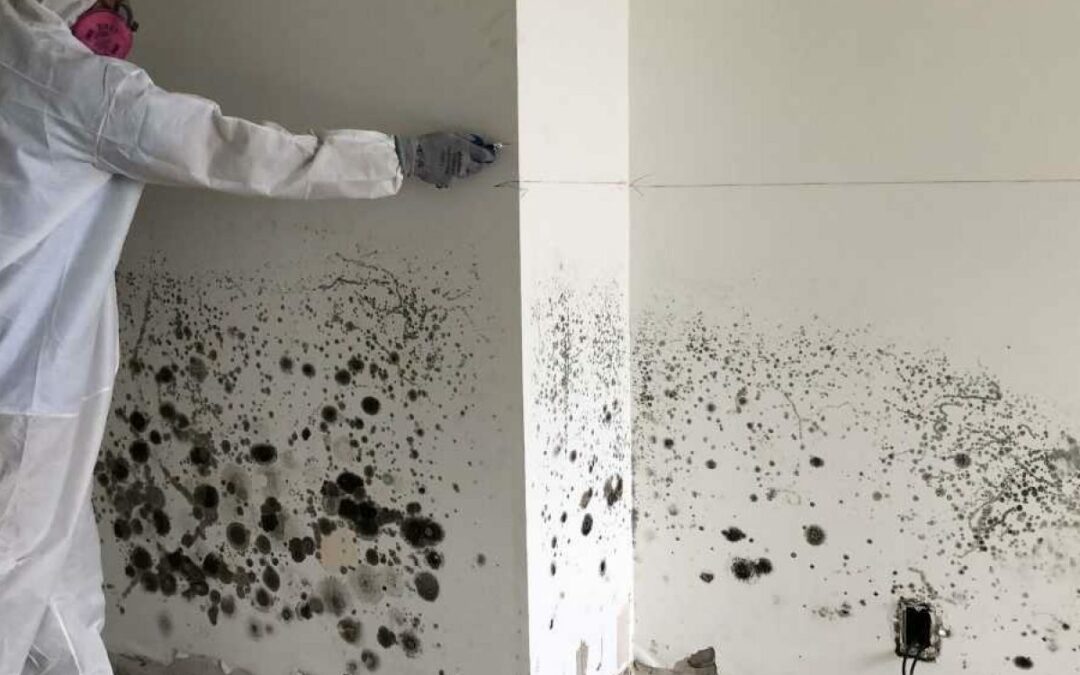As environmental remediation and selective demo professionals, we deal with a lot of unpleasant stuff: asbestos, lead and a whole lot of mold.
We often think of mold as it relates to food (we all have some forgotten snacks at the back of the fridge) but did you know mold is also a common problem in buildings? Let’s dive into everything you need to know about mold so you’re prepared if you find it in your home or office!
WHAT IS MOLD? WHAT CAUSES MOLD TO FORM?
Mold is a type of fungi that grows in multicellular structures called hyphae. These hyphae produce the mold spores that are found indoors and outdoors. In order to grow, mold requires moisture. Harmful mold falls into three types:
- Allergenic Mold
- Pathogenic Mold
- Toxigenic Mold
WHERE IS MOLD FOUND?
Mold can be particularly prevalent in refrigerators and shower rooms, after a water pipe leak, or in the aftermath of flooding.
Mold-prone areas include:
- Bathroom tile and grout
- Basement walls
- Under sinks
- Windows where moisture condenses
- Attics
CAN MOLD SPREAD?
Mold spreads quickly by releasing spores. Mold is a fungus that utilizes spores to repopulate and spread across large areas. Mold begins in a single spot and spreads outward.
WHAT ARE THE HEALTH RISKS OF MOLD EXPOSURE?
Symptoms of mold exposure may include headache, sore throat, runny nose, coughing, sneezing, itching, wheezing, difficulty breathing, watery eyes and fatigue. In those with asthma, asthma attacks can occur. In those with impaired immune systems, serious infection can occur. Long term exposure can cause issues with concentration, judgement and memory loss.
ARE MOLD EXPOSURE SYMPTOMS PERMANENT?
Depending on the type of mold that one is exposed to, symptoms can be reversible once the mold is eliminated. While exposure to toxic black mold may not directly cause death, long term exposure can lead to irreversible damage to organs, a weak immune system and even brain damage – all of which can ultimately lead to death.
WHAT AMOUNT OF MOLD IS DANGEROUS?
There is no general guideline for how much mold exposure is harmful. The effects of mold exposure manifest differently in each person.
CAN MOLD GO AWAY ON ITS OWN?
Mold requires moisture to grow but can remain inactive for a while until it is exposed to moisture or high levels of humidity. Without constant moisture, mold will become inactive but they never die unless you get rid of them completely.
WHY DO YOU NEED TO REMOVE MOLD?
It is important to remove mold before it spreads and becomes a bigger problem. Left unchecked, it can rot wood surfaces and cause indoor pollutants that can lead to health issues.
HOW IS MOLD REMOVED?
Mold is removed safely and efficiently by a licensed and trained contractor, with the use of proper PPE (personal protective equipment). The area of concern is sealed off and containment practices are used to prevent the migration of mold spores. EPA approved cleaning and disinfecting solutions and encapsulants are used during removal processes with all material properly disposed of.
If mold has been discovered in your residental or commercial property, reach out to us for a complimentary quote – you need a specialized contractor who has the experience and workforce to handle the job!
At C&C Unlimited, we pride ourselves on completing projects safely, on time, on budget and within scope.

